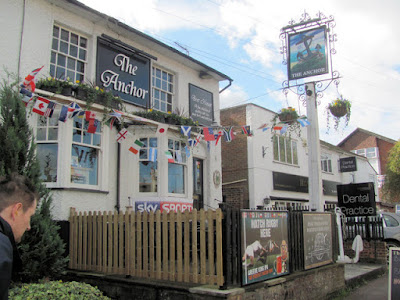
Over the past year or so I have been taking a close interest in
Wrench postcards of Hertfordshire because they are normally of very good quality and can be dated accurately to about 1903/4.
The card on the right was a problem as the title is "Beckhampton Place" and I was looking for evidence that this was simply a printing error for "Berkhamsted Place".

A few days ago the card on the left came up for sales (I was unfortunately outbid so only reproduce a cleaned up thumb). The image on the left is from the same negative as the Wrench card and is clearly labelled "Berkhampstead Place." The other image is Edgerton House (also in Berkhamsted). This not only identifies the location but strengthened the case for a picture of "Woodcock Lane" actually showing Woodcock Hill, Berkhamsted.
The problem is that the card is labelled Raphael Tuck & Sons, "County" Postcard No 2275 and was posted in 1901. This clearly predates any known Wrench view postcard of Hertfordshire. It seems a little unlikely that a firm as successful as Raphael Tuck would have allowed the upstart Wrench to use the same negative - so was there some industrial espionage - or did a Berkhamsted photographer take the picture and sell it to both the rival companies?
If you know of any other early Raphael Tuck or Wrench cards which might have been duplicated in this way please let me know.
















